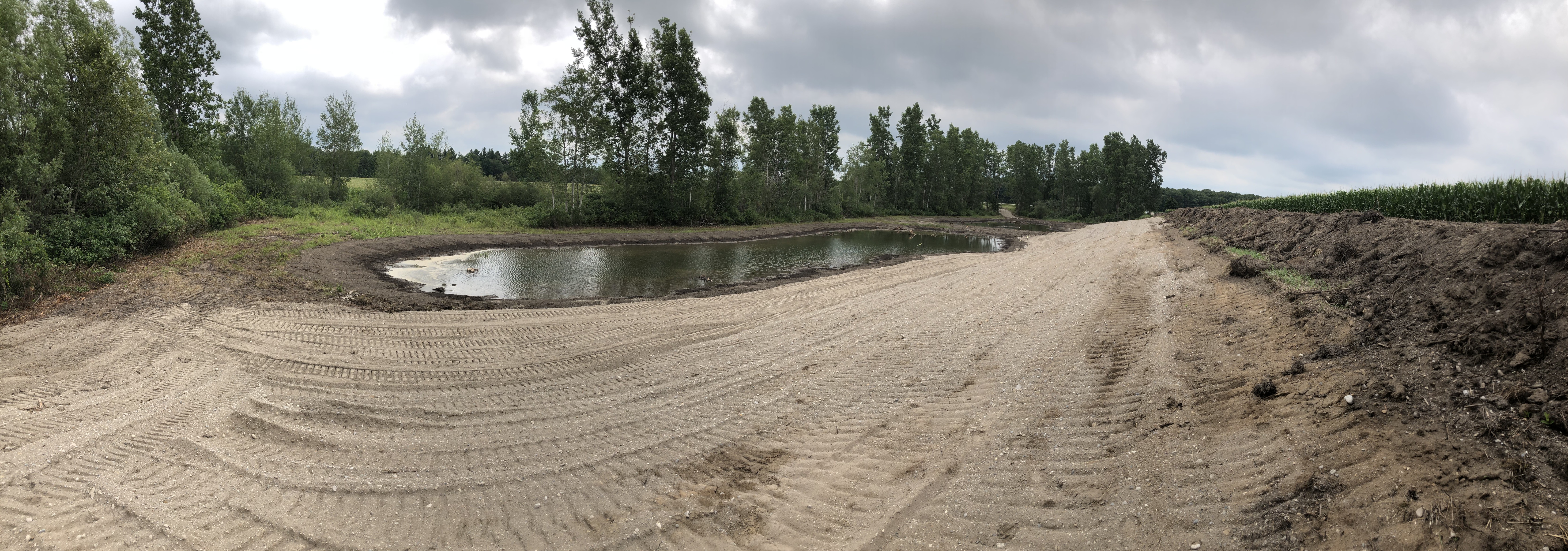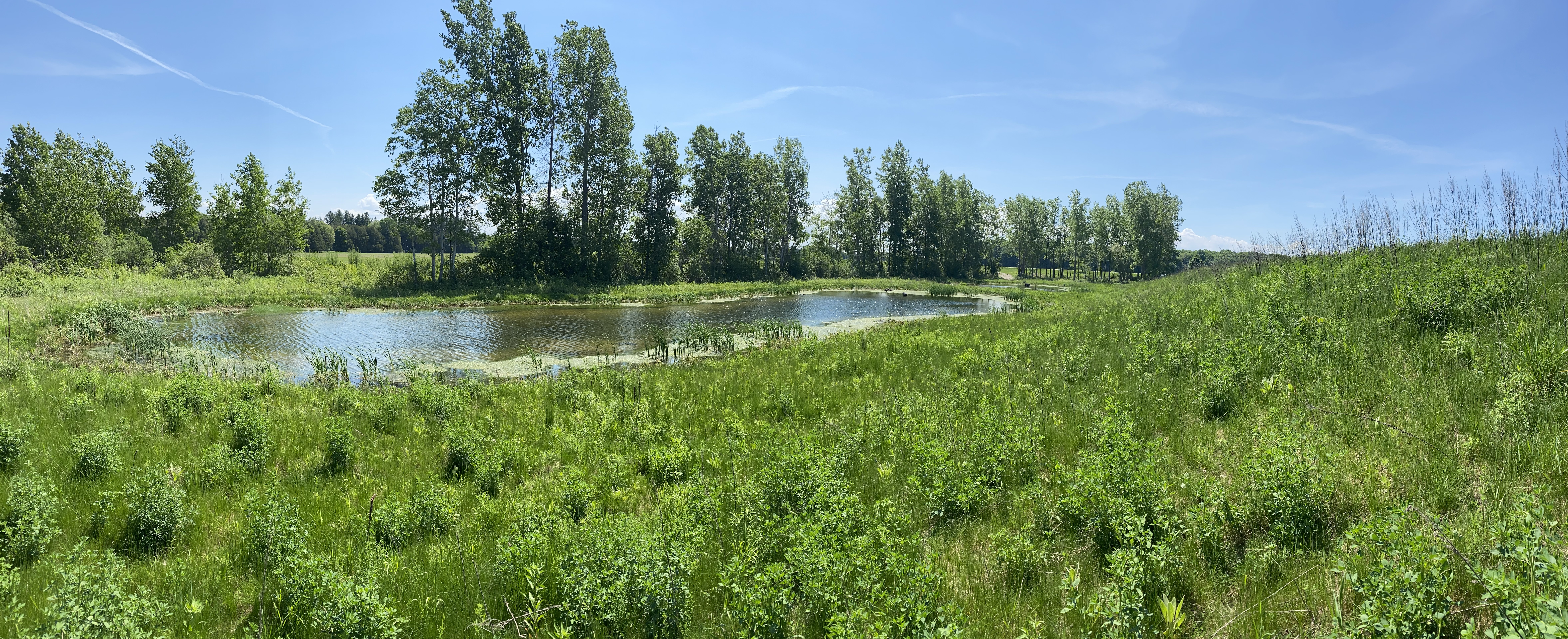Update: June 21, 2022
The MAAP program partnered with Duck’s Unlimited in 2018 to enhance a small legacy aggregate pit in Huron County. Originally, the site only provided marginal wetland habitat due to Phragmites invasion and lack of wetland vegetation. The rehabilitation plan designed by Ducks was executed in the fall of 2019 following three cycles of Phragmites control sprays. The site design included strategic contouring of the basin to soften the side slopes and provide an undulating bottom to encourage a diverse variety of wetland plan communities.
The MAAP team visited the site throughout the rehabilitation process to catalogue it progress and ensure that its development was meeting its successional goals. Below are sequential images of the site. The establishment of native species on the side slopes were a little slow, but once established, they thrived on the well drained soil due to their deep root systems. Similarly, a variety of wetland vegetation slowly began to establish within the basin and different wetland communities are now thriving.
MAAP will continue to monitor the site and has done its best to set the site up for success. Continued efforts and stewardship from the landowner will ensure the best possible outcome.



MAAP Partners With Ducks Unlimited Canada
Written: July 20, 2018
The Management of Abandoned Aggregate Properties (MAAP) program is working with Ducks Unlimited Canada (DUC) to enhance a small abandoned (legacy) aggregate pit in Huron County (near Clinton). This two acre site was excavated to construct the adjacent highway prior to the Aggregate Resources Act and never held a licence. The site is now seasonally flooded and is providing marginal wetland habitat due to Phragmites invasion and lack of wetland vegetation. These sites can be a challenge to rehabilitate as wetlands due to porous soils (sand and gravel) however this site lends itself well to wetland creation as the water table is at or very close to the surface.
The MAAP program aims to rehabilitate sites to provide a higher level of function (usefulness) over the prevailing condition of the site, always having regard to eliminating any safety concerns. The landowner of this site, Mr. Wise, wanted the legacy site enhanced as a wetland due to his interest in wildlife although the previous land use was agriculture. We reached out to DUC’s for their expertise in this area. Currently, DUC has developed a rehabilitation plan that included Phragmites control and monitoring as well as strategic contouring of the basin to soften the side slopes and provide an undulating bottom which will encourage a diverse variety of wetland plant communities.
The project is set to be completed in the fall of 2019! We are excited to partner with DUC to not only rehabilitate this legacy pit but to learn more on the creation of wetlands and implement these practices at more sites across the Province.

